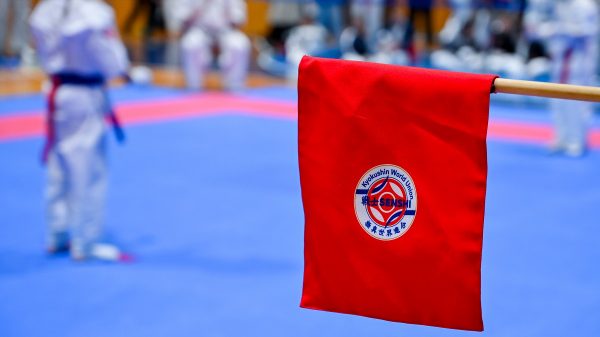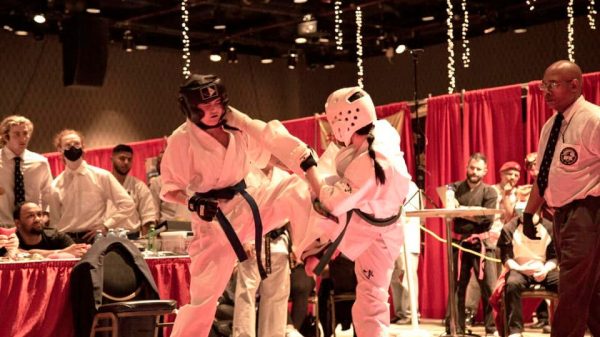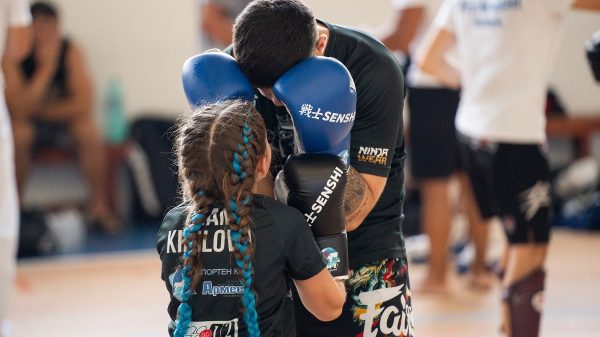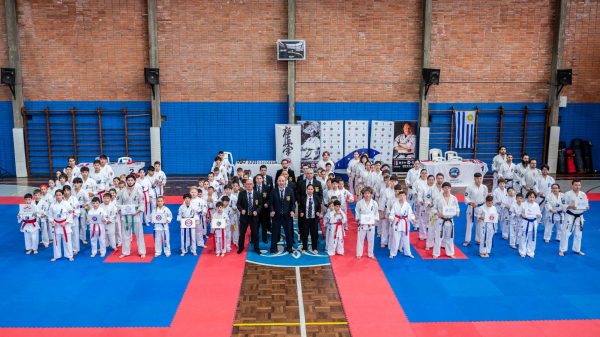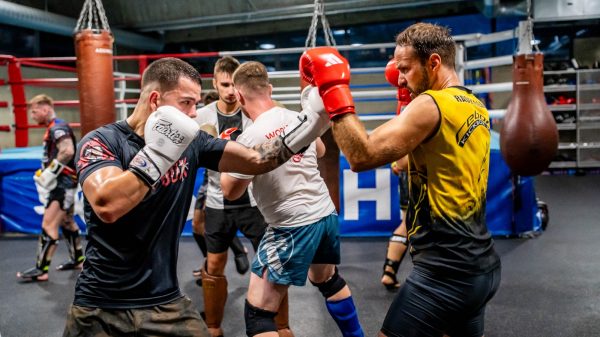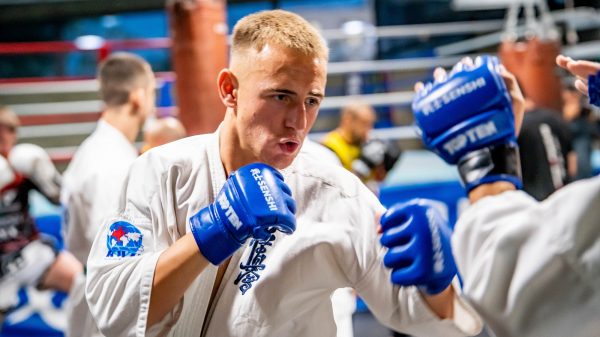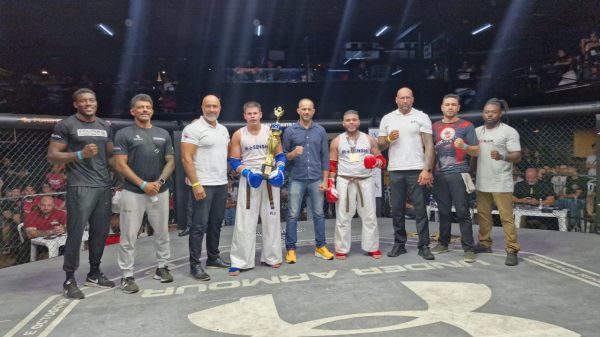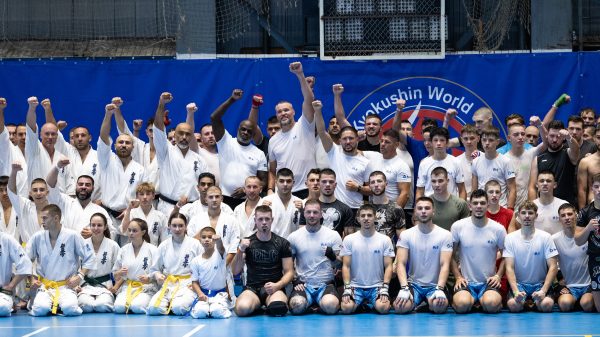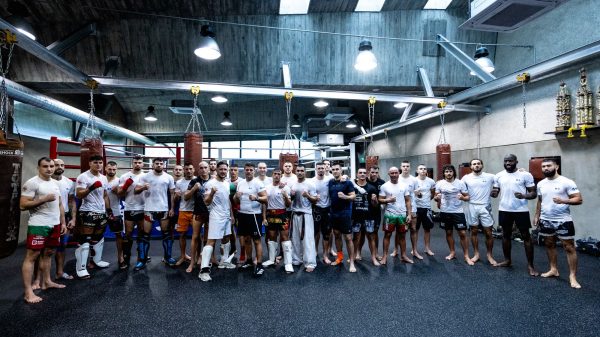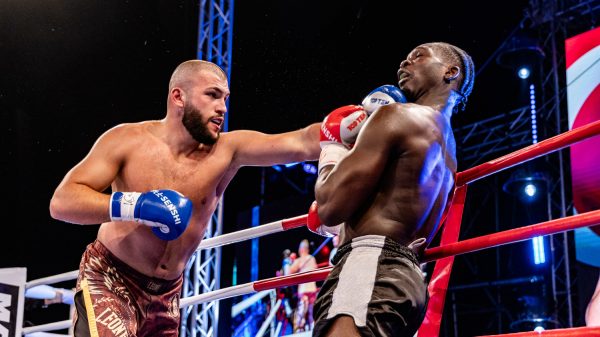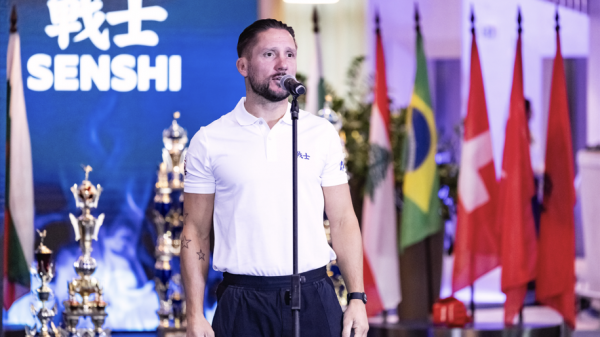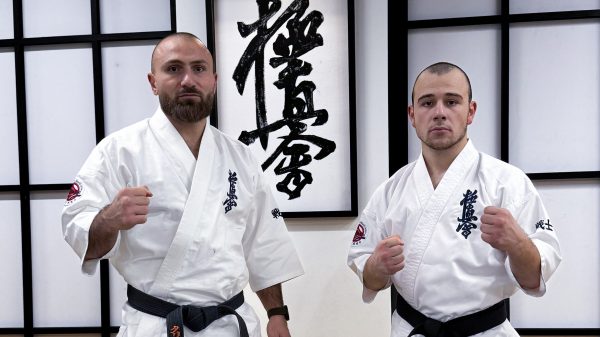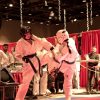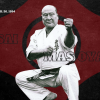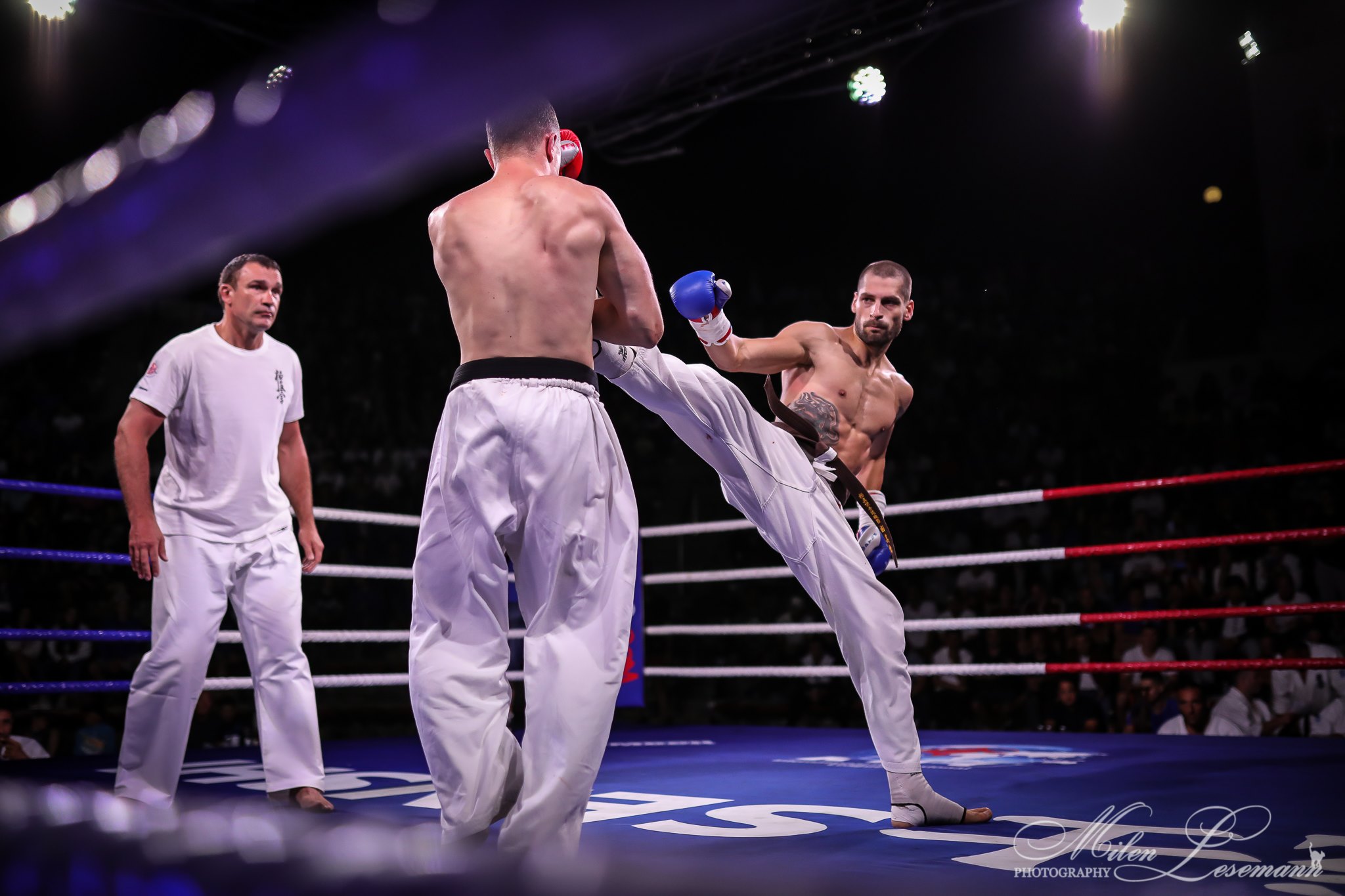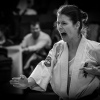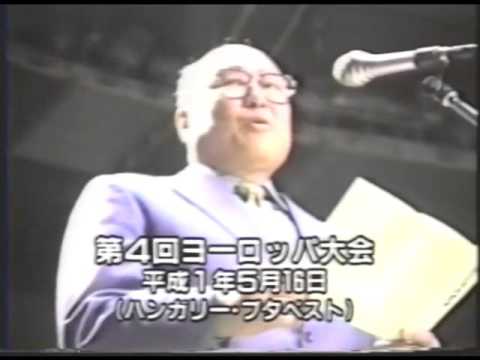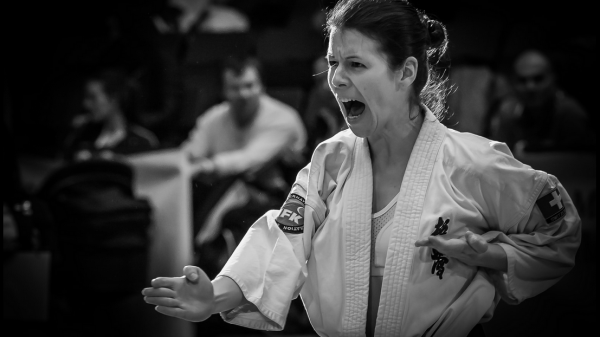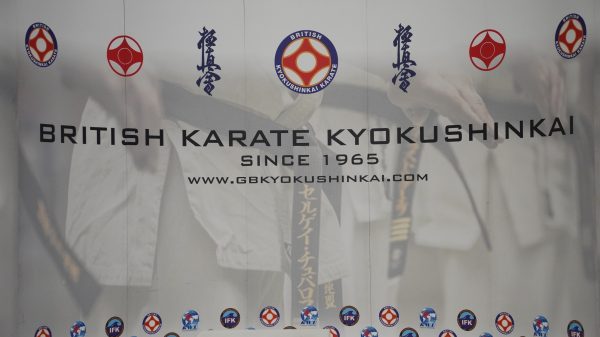For many practitioners, one of the most challenging
components of karate training is learning the nuances of the terms used in the dojo. Any instructor can offer a one-word definition of each Japanese word, and that can certainly lessen the complexity of what’s being taught. But often a quickie translation isn’t enough to convey the true meaning of the terms the Japanese chose to describe the concepts of karate.
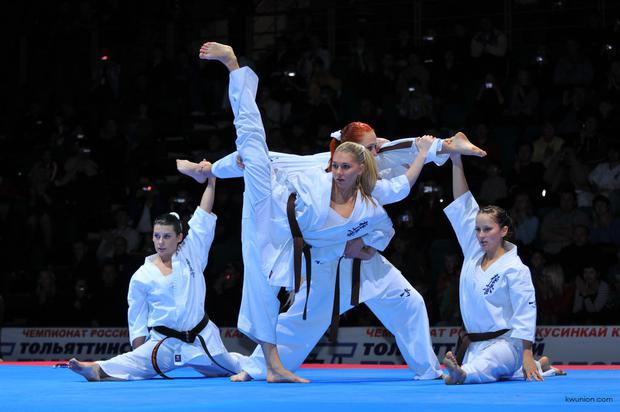
Unfortunately, the average student seldom gives it a second thought. When he’s told thatbunkai means “application,” that’s the end of the story as far as he’s concerned. Few have the time or the inclination to delve into the kanji characters that compose each Japanese word, says goju-ryukarate expert Chuck Merriman.
“The misunderstanding comes from just physically training in karate and not really studying karate,” Merriman says. “The important thing is the kanji. They can mean a lot of different things depending on how they’re written.”
That lack of understanding often leads to certain words being linked to the wrong meaning, says the Waterford, Connecticut-based instructor. “The true meaning of these words isn’t important if you only practice karate for exercise or sport, but forkarate-do — the physical, mental and spiritual study of karate — it becomes very important.”
In this article, Merriman identifies 10 often-misunderstood karate terms and sets the record straight on what they really mean.
Bunkai
Misunderstood meaning: application
Actual meaning: analysis
Why it matters: When Merriman says bunkai is one of the most misunderstood terms in karate, he’s speaking from experience. “The first thing I do when I run seminars is ask people what bunkai means, and the first answer is invariably ‘application,’” he says.
In fact, the word refers to analyzing a technique by looking at the overall movement and breaking it down into the individual components, he says.
“Bunkai is not the obvious,” he continues. “It’s like having an outline that’s not filled in.” Furthermore, it can change over the years as your body, experience and depth of knowledge change. There are three levels of bunkai, he says. The first,kihon bunkai, is basic. Everybody does the movement exactly the same way. It’s like learning kata, he says. The second is oyobunkai. It refers to varying the movement according to your body size. The third, renzokubunkai, entails a continuous action whereby you do one technique, then your opponent executes a different one. “It’s almost like fighting,” he says. “It’s a gradual progression, almost a free exercise, but it’s not sparring.”
Bushido
Misunderstood meaning: warrior way
Actual meaning: military-gentleman way
Why it matters: Based on the characters bushi (bu—military, and shi—gentleman) and do(way), bushido refers to a method of training designed to enable you to protect yourself and others, Merriman says. The Okinawan interpretation isn’t aggressive; it’s defensive, he adds.
“Bushido is not, ‘Let’s attack those guys.’ The term sanchin means ‘three conflicts.’ The three conflicts are mind, body and spirit. That’s where the warrior comes in; that’s the battle. If you train properly, you won’t be so quick to take offense and jump into fights because you’re more secure in yourself.”
Dan
Misunderstood meaning: degree
Actual meaning: level, step or grade
Why it matters: When karate was introduced in the West, many people erroneously believed that anyone with a black belt was an expert, Merriman says. That may also account for their tendency to refer to dan ranking in terms of degrees. “It’s the furthest thing from the truth. There are different levels—from shodan, or first level, all the way up to 10th dan—[which mark your] progress throughout your career in karate.”
That’s one reason he’s a little skeptical when he runs into a 20-year-old boasting about his fifth-level black belt. “It doesn’t add up to the training time and experience you need to achieve that level of expertise,” he argues. “Of course, if it’s just for sport, everything is based on how many tournaments you win and what seeding you have. So, in that respect, you could be a 20-year-old fifth dan.”
Dojo
Misunderstood meaning: academy, school or studio
Actual meaning: “way place,” a location at which you study the deeper aspects of karate
Why it matters: Derived from the words do (way, or a philosophical approach to training) and jo (place), a dojo is not just “a building where you go to practice karate twice a week because you don’t want to go bowling,” Merriman chides. It’s a place where you learn a traditional art and acquire a new viewpoint on life.
Kata
Misunderstood meaning: prearranged set of movements
Actual meaning: form or shape
Why it matters: “Kata is much deeper than can be summed up in a couple of words,” he says. “It’s a way for a student of karate-do to set a pattern of training for a long period.”
Some styles of karate teach relatively few kata — goju, for instance, has only 12 short ones. But don’t be fooled, he says. When you develop the three levels of bunkai for each one, there are seemingly endless variations. “The analogy I use is that there are only 26 letters in the English alphabet, but go look in the library sometime,” Merriman says. “You can apply the same idea to karate with a limited number of basics and a limited number of kata. The rest is how you develop these things for yourself.”
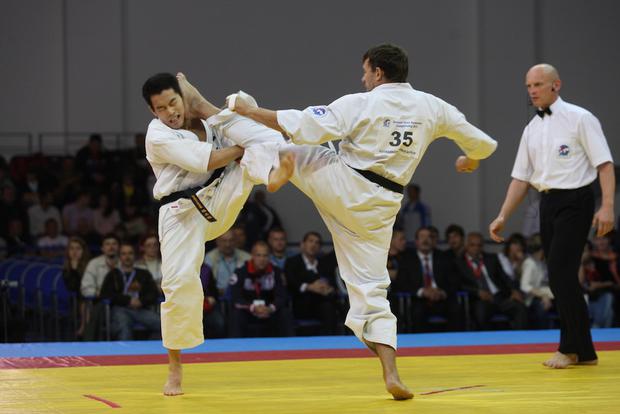
Kumite
Misunderstood meaning: sparring
Actual meaning: grappling or engagement of hands
Why it matters: Composed of two roots — kumi (grapple) and te (hand) — kumiterefers to the instant a fight actually begins. It’s when you and your partner first make contact,Merriman says. “When you think about it, you’ve got to be standing right in front of each other when you touch. It’s important to understand the real meaning of the word to better understand what happens during oyo bunkai.”
Mokuso
Misunderstood meaning: meditation
Actual meaning: reflection and contemplation
Why it matters: Practicing mokuso gives you an opportunity to get in the proper mindset to train, he explains. “It’s not meditation in the sense of going off into another world. It’s reflecting on your past training and contemplating the training you’re about to do.”
Rei
Misunderstood meaning: bow
Actual meaning: spirit or soul
Why it matters: “For somebody practicing karate for exercise or sport, rei is merely a salutation,” Merriman says. “These days, people bow by nodding their head and slapping the sides of their legs, but that’s not the proper way to do it.” The bow must come from the abdominal area because that’s where the tan tien (the seat of the soul) is. “If rei is ‘soul,’ obviously the bow has to be done from there,” he adds.
Reishiki
Misunderstood meaning: spirit
Actual meaning: manners, etiquette or correctness
Why it matters: “[It refers to] the correct attitude — why you’re training and always keeping your mind on the path or way,” he says. For example, you’re expected to know and demonstrate proper etiquette in the kohai-sempai (junior-senior) relationship. “Your sempai always precedes you. You open the door and let him go first. Before you take care of yourself, you always make sure he’s taken care of.”
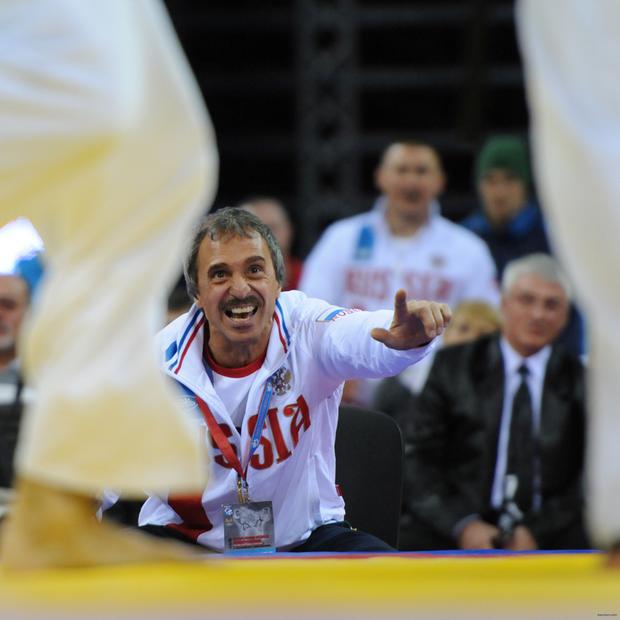
Sensei
Misunderstood meaning: teacher
Actual meaning: guide
Why it matters: Because it’s composed of the roots sen (before) and sei (life), the literal translation of sensei is “before in life,” Merriman says. “A sensei is somebody who guides another person. For example, if you went to climb a mountain, you’d probably need a guide. Why? Because the guy has climbed that mountain before, and he made it.”
It’s the same thing with karate. The sensei was once at the same stage of training you’re at, and he can show you the way up. If you understand what his role is, you will have a better idea of what you can expect from him and what he can expect from you, he says. “Think of it this way: A sensei is behind you, pushing you forward, not standing in front of you, pulling. Ultimately, it’s your responsibility to progress,” he says.
Conclusion
Whether you practice karate for exercise or are a fanatic who’s interested in every nuance of the art, it’s essential to comprehend the true meaning of the terms that describe what you do, Merriman contends. “If you understand [them], it fills you with a feeling of having something more than just the ability to kick, punch and block.” And that’s what practicing karate is really all about.


